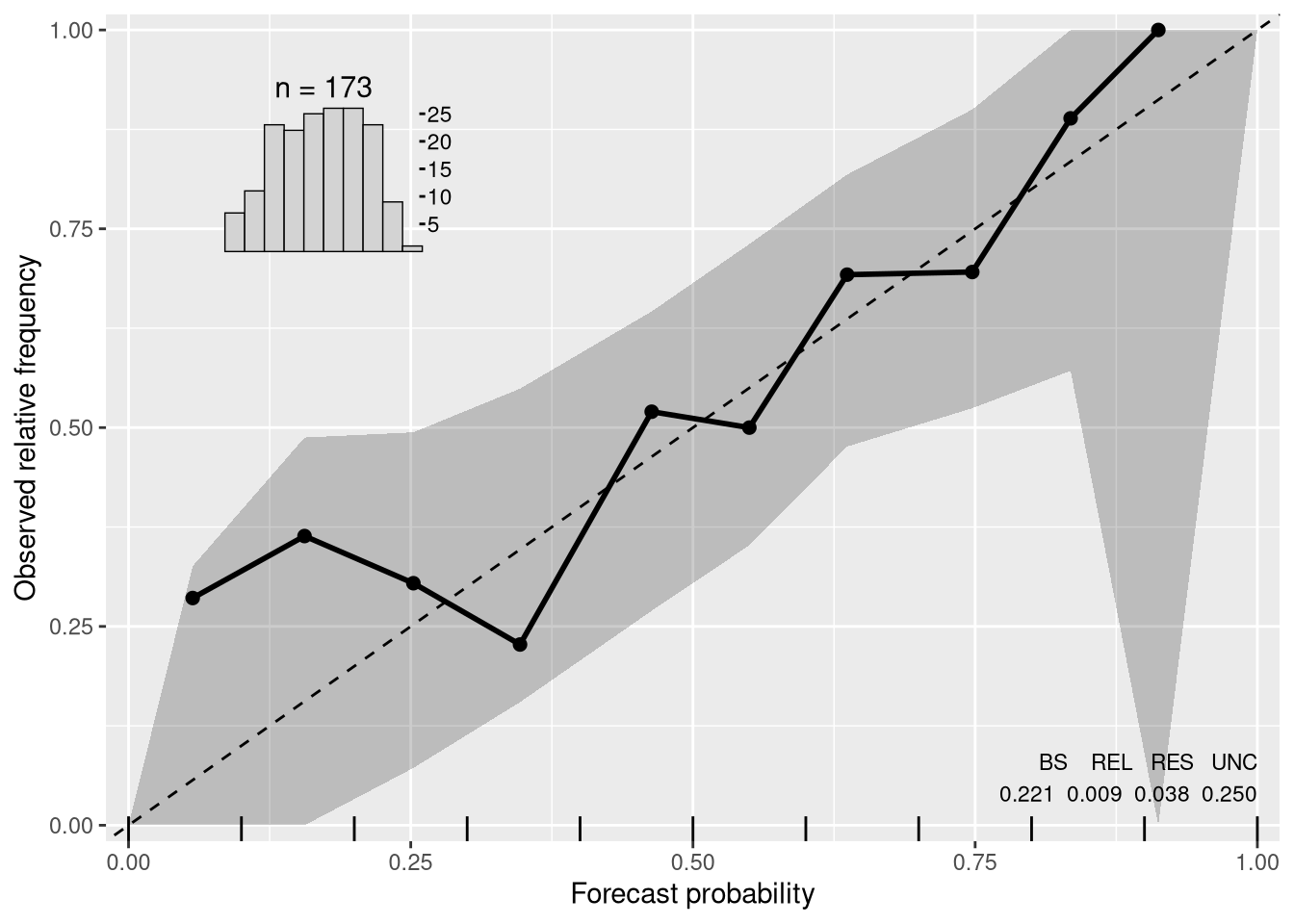Usage
## S3 method for class 'reliagram'
plot(
x,
single_graph = FALSE,
minimum = 0,
confint = TRUE,
ref = TRUE,
xlim = c(0, 1),
ylim = c(0, 1),
xlab = NULL,
ylab = NULL,
main = NULL,
col = "black",
fill = adjustcolor("black", alpha.f = 0.2),
alpha_min = 0.2,
lwd = 2,
pch = 19,
lty = 1,
type = NULL,
add_hist = TRUE,
add_info = TRUE,
add_rug = TRUE,
add_min = TRUE,
axes = TRUE,
box = TRUE,
...
)
## S3 method for class 'reliagram'
lines(
x,
minimum = 0,
confint = FALSE,
ref = FALSE,
col = "black",
fill = adjustcolor("black", alpha.f = 0.2),
alpha_min = 0.2,
lwd = 2,
pch = 19,
lty = 1,
type = "b",
...
)
## S3 method for class 'reliagram'
autoplot(
object,
single_graph = FALSE,
minimum = 0,
confint = TRUE,
ref = TRUE,
xlim = c(0, 1),
ylim = c(0, 1),
xlab = NULL,
ylab = NULL,
main = NULL,
colour = "black",
fill = adjustcolor("black", alpha.f = 0.2),
alpha_min = 0.2,
size = 1,
shape = 19,
linetype = 1,
type = NULL,
add_hist = TRUE,
add_info = TRUE,
add_rug = TRUE,
add_min = TRUE,
legend = FALSE,
...
)
Details
Reliagrams evaluate if a probability model is calibrated (reliable) by first partitioning the forecast probability for a binary event into a certain number of bins and then plotting (within each bin) the averaged forecast probability against the observered/empirical relative frequency.
For continous probability forecasts, reliability diagrams can be plotted either for a pre-specified threshold or for a specific quantile probability of the response values.
Reliagrams can be rendered as ggplot2 or base R graphics by using the generics autoplot or plot. For a single base R graphically panel, points adds an additional reliagram.



